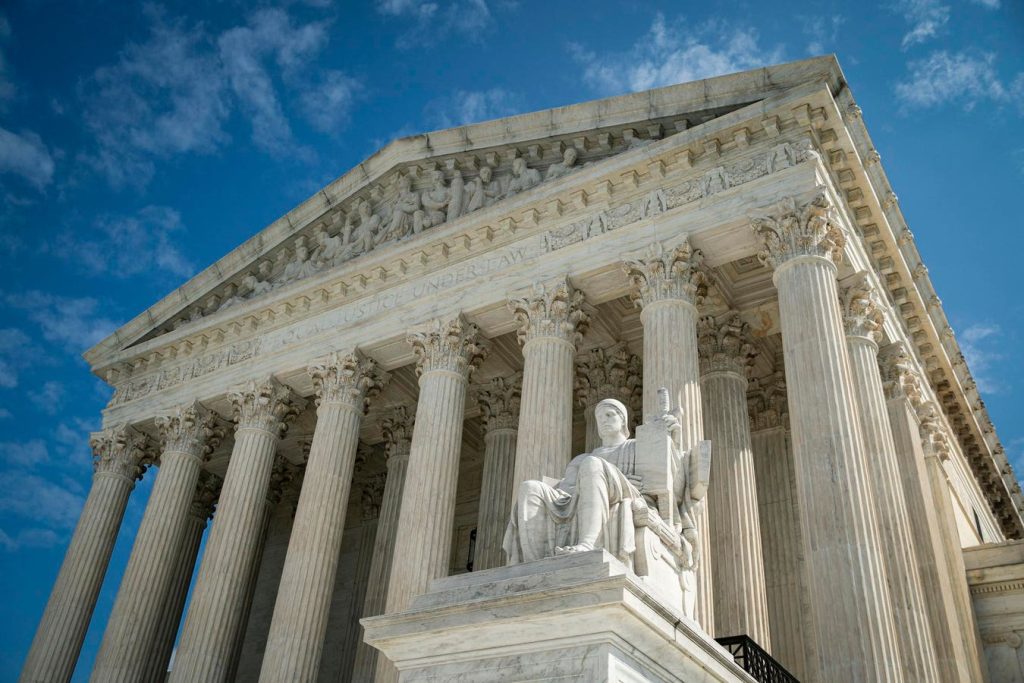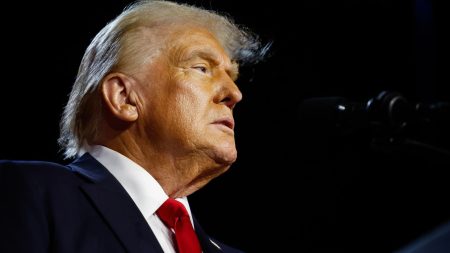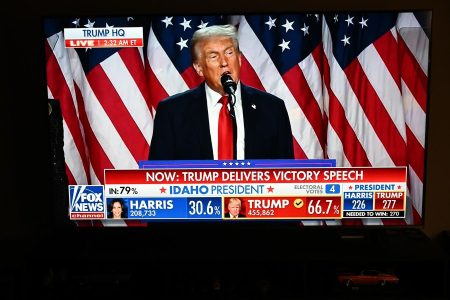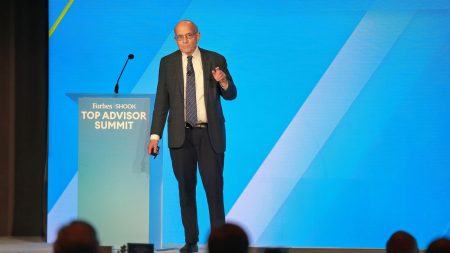The Supreme Court issued a landmark ruling on Friday gutting a longstanding precedent that had given deference to federal agencies. The consequences of this decision will be felt broadly by Americans for many years. But student loan borrowers may be among the first to experience the impacts.
Following two major lower court decisions earlier this week that blocked key elements of a Biden administration student loan forgiveness and repayment program, the Supreme Court already seemed poised to eventually take up student debt relief yet again. But the latest ruling by the nation’s highest court makes it even more likely that Biden’s student debt relief plans, and potentially other student loan forgiveness and repayment programs, are now in very serious danger.
Here’s the latest.
Ruling Impacts Deference To Federal Agencies, Which Would Include Student Loan Forgiveness and Repayment
In a 6-3 ruling split along idealogical lines, the Supreme Court’s conservative majority overruled Chevron U.S.A., Inc. v. Natural Resources Defense Council. This key 1984 case has been a major precedent for 40 years, governing how courts handle administrative law matters. Put simply, the so-called Chevron doctrine mandates that in cases where there is legislative ambiguity or room for interpretation, courts should defer to administrative agencies who are experts in their fields.
The idea behind the Chevron deference is that members of Congress, who pass laws, cannot possibly be experts in every single subject matter. So, lawmakers pass legislation that may have somewhat generalized language; they then direct federal agencies to craft regulations to implement that legislation. Federal agencies have specific expertise in the fields that the agencies regulate, so they are the best equipped to do this. And, according to the Chevron reasoning, judges should not risk imposing their own biases or values in interpreting agency regulations, when the agencies themselves should know what they are doing because of their inherent expertise. This would include, for example, the U.S. Department of Education having the expertise to draft regulations implementing student loan forgiveness and repayment programs authorized by Congress.
The latest case, Loper Bright Enterprises v. Raimondo, strikes down 40 years of Chevron deference.
“Chevron has proved to be fundamentally misguided,” wrote Chief Justice John Roberts in Friday’s decision. “Courts may not defer to an agency interpretation of the law simply because a statute is ambiguous.”
The three liberal justices sharply rebuked the decision, accusing the conservative majority of a judicial power grab.
“In one fell swoop, the majority today gives itself exclusive power over every open issue—no matter how expertise-driven or policy-laden—involving the meaning of regulatory law,” said Justice Elena Kagan in her dissent. “As if it did not have enough on its plate, the majority turns itself into the country’s administrative czar. It defends that move as one (suddenly) required by the (nearly 80-year-old) Administrative Procedure Act. But the Act makes no such demand. Today’s decision is not one Congress directed. It is entirely the majority’s choice.”
Ruling Follows Two Major Decisions Blocking Student Loan Forgiveness And Lower Payments
The Supreme Court’s decision follows two significant lower-court rulings on Monday blocking elements of President Biden’s new SAVE plan. SAVE is an income-driven repayment plan — referred to as IDR plans — that tie a borrower’s monthly payment to their income, and result in eventual loan forgiveness after a certain number of years.
Two groups of Republican-led states filed legal challenges to overturn SAVE. In two separate rulings, federal district court judges issued preliminary injunctions blocking key elements of the SAVE plan. This includes lower monthly payments that were set to go into effect in July, as well as student loan forgiveness under the program. The judges cited legal uncertainty about congressional intent in the statute that the Biden administration relied on to enact the SAVE program.
How The New Supreme Court Case Could Gut Student Loan Forgiveness And IDR Plans
The Biden administration enacted the SAVE plan under a provision of the Higher Education Act of 1993. This state, passed by Congress, authorizes the Education Department to draft regulations establishing income-driven repayment plans, which tie a borrower’s monthly payment to their income for a maximum period of 25 years. The department has relied on this authority for 30 years, creating regulations establishing four different IDR plans: the Income Contingent Repayment plan in 1994, the Pay As You Earn plan in 2012, the Revised Pay As You Earn plan in 2015, and the SAVE plan in 2023. A fifth IDR plan called Income-Based Repayment was passed through separate congressional authorization in 2007.
But in their attempt to overturn the SAVE plan, the Republican-led states argued that the Higher Education Act is ambiguous with respect to the parameters of IDR plans, and whether the Education Department can set repayment terms that are more generous than the maximum limits that the statute mentions (such as student loan forgiveness in 20 years or less, rather than 25 years). In the preliminary injunction rulings issued earlier this week, judges in Missouri and Kansas suggested that the states could be correct.
The Supreme Court’s overruling of Chevron will now make it even more difficult for the Education Department to justify the SAVE plan — and potentially all IDR plans that were derived from the same 1993 statutory authority. No longer required to defer to agency expertise, federal courts will have a freer hand in applying their own interpretations (and biases) to statutory terminology they deem to be ambiguous. If Congress doesn’t say something as clearly and explicitly in a statute as a court thinks it should have, rather than deferring to the agency in charge of implementing that statute, a judge can impose their own unique view and interpretation.
The Biden administration will argue that SAVE is authorized under the 1993 Higher Education Act statutory language, since the text provides benchmarks (i.e., the repayment plan cannot exceed 25 years, and payments no higher than 20% of discretionary income). But by nearly ever measure, SAVE goes beyond what Congress explicitly said the Education Department could do (i.e., a repayment plan of less than 25 years in certain cases, and payments of 5% or 10% of discretionary income). As a result, without Chevron deference, a judge opposed to these programs could easily find a way to rule the SAVE is not authorized. And the other IDR plans established through the same process (including ICR and PAYE) could theoretically be at risk, as well, although they are not directly subjects of the current legal challenges.
What Comes Next For Borrowers Pursuing Student Loan Forgiveness And IDR Plans
For now, borrowers who are in the SAVE plan can remain in that plan, and the Education Department is accepting new enrollments. However, student loan forgiveness under SAVE is currently paused. The department is expected to release new guidance for borrowers in the coming days in light of the recent legal developments.
In the meantime, the Biden administation has formally appealed the two rulings from Missouri and Kansas. In the coming months, federal appeals court judges will hear arguments from the administration as well as the Republican-led states. But now, they will have factor in the recent Supreme Court ruling overturning Chevron. This will make the Biden administration’s job in defending SAVE harder.
And given the fact that there are two parallel legal challenges in two federal circuits with two somewhat different rulings, it is almost inevitable that the Supreme Court will eventually take up the SAVE legal challenges. And the Education Department will have the unenviable task of trying to argue, in the shadow of Chevron being overturned, that legislation Congress passed more than 30 years ago is not open to interpretation.
“It is now ‘the courts (rather than the agency)’ that will wield power when Congress has left an area of interpretive discretion,” said Justice Kagan in her dissent.
Read the full article here










